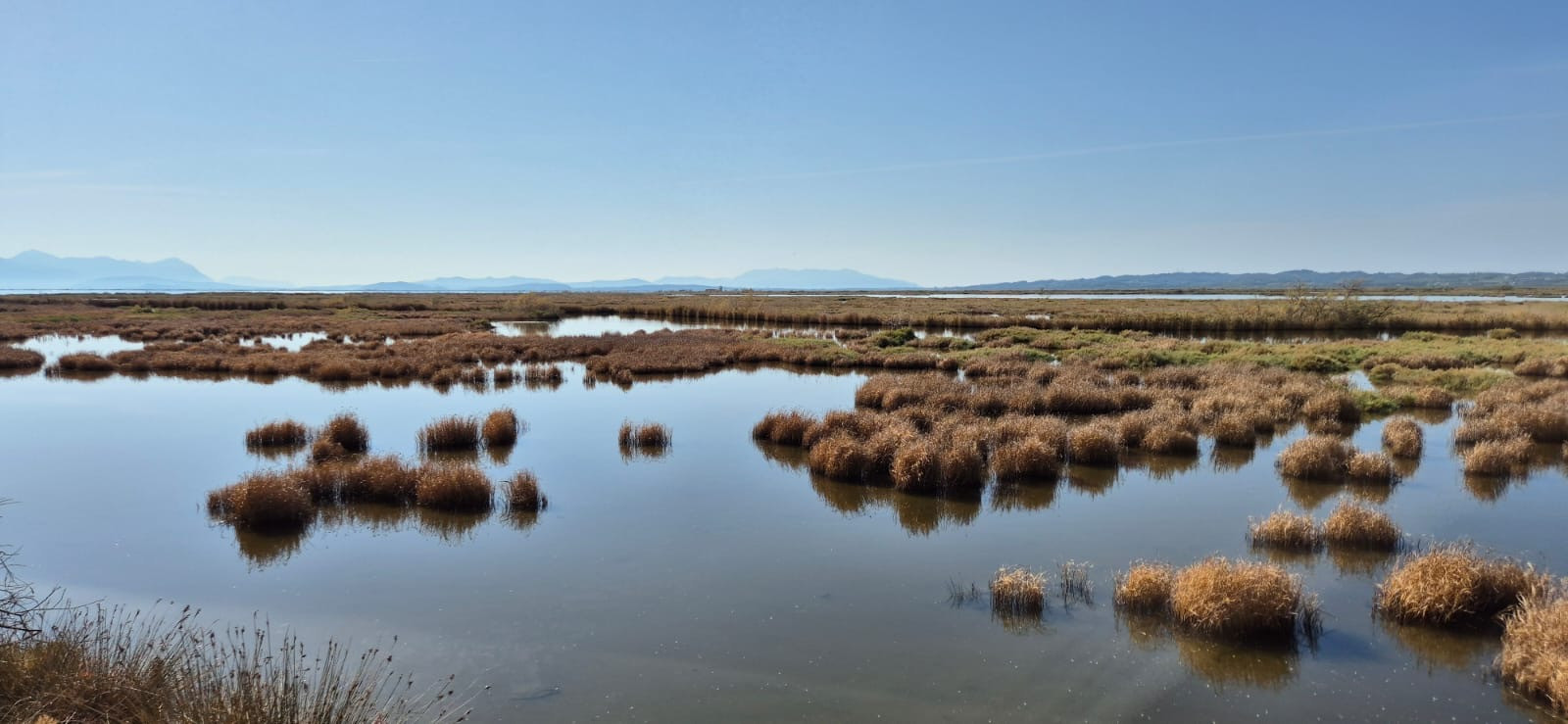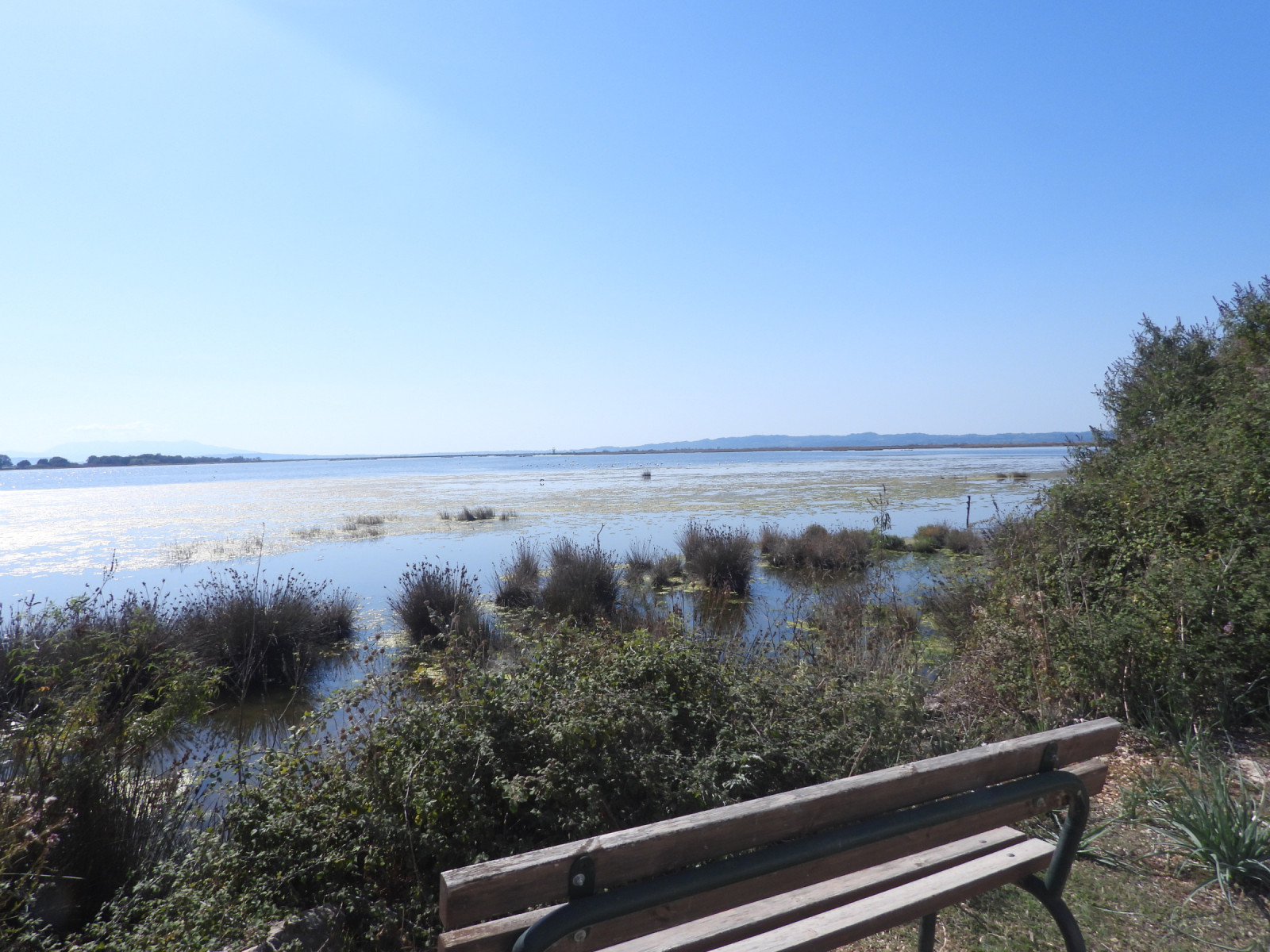Descrição
The interconnected Rodia and Tsoukalio lagoonal complex of the northern Amvrakikos Gulf is formed in the delta of the river Louros, with Rodia being the largest Greek marsh while the innermost and more restricted water body of the two, with less saline waters than Tsoukalio. About 300 bird species have been recorded in Amvrakikos National Park, out of a total of over 450 species of the Hellenic avifauna.
The northern section, the embankment along the river Louros offers mostly sweetwater birds (e.g. Íbis-preta, Colhereiro), is heavily potholed and overgrown. By 2x4, mostly impassable after rains - visiting after a heavy shower, I was forced the retreat.
The dirt track between Strongyli and Vigla starts with a narrow 50 metres section only to widen into a proper macadam, interesting for its songbirds, numerous Toutinegra-de-cabeça-preta, Chasco-cinzento and Melro-azul. A well surfaced track and quite a productive section.
It ends with productive shorebird shallows in front of Vigla (also Flamingo-comum and the Pelicano-crespo). From Vigla follow asphalt to the east until you reach the main road from Arta. Turn right (south) there and continue until you reach the sea, with a small bridge over the canal at your right, continuing into the embankment protecting the Tsoukalio lagoon.
Try to follow the dirt track along the embankment as long as your car allows you to. This is the area for saltwater shorebirds (Borrelho-de-coleira-interrompida, Ostraceiro), terns, gulls, and more flamingos.
Wintering species recorded in large numbers in Αmvrakikos include the Garça-branca-grande, the Flamingo-comum, the Colhereiro, the Pato-branco, the Piadeira, the Merganso-de-poupa, the Pilrito-comum, the Perna-vermelha-comum, as well as Milhafre-preto and Milhafre-real (source https://amvrakikosalliance.net/biodiversity/bird-fauna/).
The Amvrakikos Wetlands National Park was founded on March 21, 2008 by Joint Ministerial Decree 11989/2008 (Government Gazette 123/D‘/21-03-2008).
Detalhes
Acesso
The village of Petra, gateway to the western lagoons of Rodia and Tsoukalio, lies some 60 km or about an hour’ drive from either the northern Ionian resort of Parga or the southern resort of Lefkada. Be aware that the final road section Louros to Petra is winding and waiting for accidents to happen due to overspeeding.
Check the cliff by the main road to Arta, opposite to the turn off to Petra: sometimes it holds Trepadeira-rupestre. Click on the "P" in the map for directions.
Terreno e Habitat
Mar , Camas de junco , Agricultura , Árvores e arbustos dispersos , Praia , Lamaçais , Terras húmidas , Desfiladeiro/precipícioCondições
Montanhoso , Rochoso , Paisagem aberta , PlanoCaminho circular
Nãoé útil um telescópio?
SimBoa temporada de observação de aves
Durante todo o anoMelhor hora para visitar
Inverno , Migração da primavera , Primavera , Migração de outonoRota
Estrada pavimentada , Estrada não pavimentadaCaminho dificil
Caminhada médiaAcessível por
CarroAbrigo/plataforma deobservação de aves
SimInformação extra
To be properly explored, Rodia and Tsoukalio lagoons require at least one full day or, better, two days.
A detailed description of the wider area is to be found in the Birding in Greece – Travel Guide to birdwatching sites in Greece (2014) by Vlachos, Trigou & Stavrakas (check the links below), as well as the Birdwatching in Northern Greece (2023) by Steve Mills.
Landscape photo: morning near the village of Strongili by Marion Schneider & Christoph Aistleitner / Wikimedia Commons.
Ligações
- eBird list
- Birding in Greece – Travel Guide to birdwatching sites in Greece (2014, pdf download) by Vlachos, Trigou & Stavrakas
- Travel Guide to birdwatching sites in Greece (Amvrakikos chapter starts at pg. 122)
- Amvrakikos Alliance




